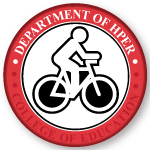Author ORCID Identifier
Olagoke - https://orcid.org/0000-0003-0271-4069
Hughess - https://orcid.org/0000-0002-1431-3396
O. Olagoke - https://orcid.org/0000-0002-6015-2642
Document Type
Article
Publication Date
11-11-2020
Publication Title
Frontiers in Psychology
Volume
11
Abstract
The well-being of the public during the 2019 coronavirus (COVID-19) pandemic is deeply rooted in institutional trust in the government’s risk communication effort. The objective of this study was to examine the psychological pathway through which public trust in the government is associated with mental and physical well-being. We collected cross-sectional data from 501 participants aged ≥18 years using an online panel. Public trust in the government was assessed as our exposure variable. We screened for psychological distress by combining the Patient Health Questionnaire and the General Anxiety Disorder scale. Physical well-being was examined using self-rated health. We further assessed the roles of risk perceptions. The author conducted a one-way analysis of variance (ANOVA), Pearson’s correlations, multivariable regressions, and mediation analyses (using the Preachers and Hayes’ approach). Participants were 55.29% female, 67.86% Caucasian/white with a mean age of 32.44 ± 11.94 years. Public trust in the government regarding COVID-19 was negatively correlated with psychological distress (r = −0.20; p < 0.001) and positively associated with physical well-being (r = 0.13; p < 0.001). After adjusting for sociodemographic and socioeconomic factors, public trust remained negatively associated with psychological distress (β = −0.19; 95% confidence intervals, [CI] −0.30, −0.09) and positively associated with physical well-being (β = 0.26; 95% CI [0.16, −0.37]). Perceived self-efficacy to practice COVID-19 protective behavior partially mediated the relationship between public trust and psychological distress (13.07%); and physical well-being (28.02%). Perceived self-efficacy to protect self against COVID-19 infection can serve as a psychological pathway through which public trust may be associated with mental and physical health.
DOI: 10.3389/fpsyg.2020.570216
Recommended Citation
Olagoke, Ayokunle; Olagoke, Olakanmi; and Hughes, Ashley M., "Psychological Pathways Linking Public Trust During the Coronavirus Pandemic to Mental and Physical Well-being" (2020). Health and Kinesiology Faculty Publications. 66.
https://digitalcommons.unomaha.edu/hperfacpub/66
Creative Commons License

This work is licensed under a Creative Commons Attribution 4.0 License.


Comments
Copyright © 2020 Olagoke, Olagoke and Hughes. This is an open-access article distributed under the terms of the Creative Commons Attribution License (CC BY). The use, distribution or reproduction in other forums is permitted, provided the original author(s) and the copyright owner(s) are credited and that the original publication in this journal is cited, in accordance with accepted academic practice. No use, distribution or reproduction is permitted which does not comply with these terms.